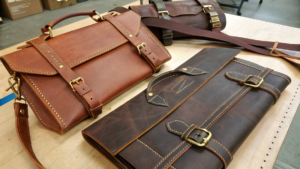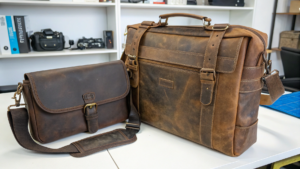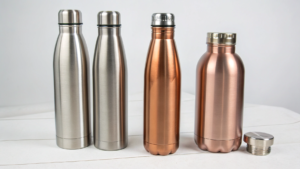Where can I buy the best stainless steel bottles?
Tired of flimsy water bottles that leak or break? Finding a durable, safe stainless steel bottle you can trust can be frustrating. Let's find the right place for you.
You can buy high-quality stainless steel bottles from reputable brands directly, major retailers (online and physical), outdoor gear shops, and specialized kitchenware stores. Look for brands known for using food-grade steel1 like 18/8 or 304.
Finding the best place depends a bit on what you value most – choice, price, or specific features. Over my years in the gifting industry, helping clients source items like this, I've learned where to look for reliable quality. Ready to explore the options and find that perfect bottle that lasts?
What is the best grade of stainless steel water bottles?
Confused by steel grade numbers like 304 or 18/8? Choosing the wrong grade might mean rust or weird tastes. You need to know which grade is truly best for your drinkware.
The best grade for stainless steel water bottles is food-grade 18/8, also known as Type 304. This type is safe, durable, resists rust and corrosion, and doesn't leave a metallic taste in your drinks.
In my experience providing corporate gifts, clients always prioritize safety and longevity. That's why 18/8 (or 304) stainless steel is the standard I recommend. Let's break down why this grade is the go-to choice.
Understanding Steel Grades
It's easy to get lost in the numbers, but the main thing is food safety and durability.
- 18/8 (Type 304)2 Steel: This is the most common and widely recommended type for food and drinks. The "18/8" refers to its composition: 18% chromium and 8% nickel.
- Chromium provides rust and corrosion resistance.
- Nickel adds to durability and also helps with corrosion resistance.
- It's non-reactive, meaning it won't leach chemicals or metallic tastes into your water.
- Other Grades: You might sometimes see Type 316, which has slightly better corrosion resistance (often used in marine environments), but for a water bottle, 304 (18/8) is perfectly adequate and usually more common. Lower grades might be cheaper but could be less resistant to rust or potentially leach unwanted elements.
Why 18/8 (304) is Ideal
| Feature | Benefit | Why it Matters for Bottles |
|---|---|---|
| Food-Grade | Safe for contact with food and beverages | Ensures no harmful chemicals leach |
| Corrosion | Resists rust and staining | Bottle lasts longer, stays clean |
| Durability | Strong and resistant to dents (to a point) | Withstands daily use and minor drops |
| Non-Reactive | Doesn't retain or impart flavors | Your water tastes like water |
Many bottles made from 18/8 steel are also double-walled and vacuum-insulated3, keeping drinks hot or cold for hours. It's the combination of safety, durability, and performance that makes this grade the industry standard for quality bottles.
How do I choose a stainless steel bottle?
Feeling overwhelmed by all the stainless steel bottle options? Choosing wrong means you might get a bottle that's too heavy, leaks, or doesn't keep drinks cold. Let's simplify the choice.
Choose a bottle based on: 1) Steel quality (18/8 or 304), 2) Insulation needs (single vs. double wall), 3) Lid type (leak-proof?), 4) Size/capacity, and 5) Your primary use (gym, office, hiking).

Picking the right bottle isn't just about looks. I've seen clients happy when the bottle perfectly fits their team's needs – whether it's for desk use or outdoor events. Let's go deeper into making the right selection for you.
Key Factors for Selection
Think about how you'll actually use the bottle day-to-day.
- Insulation:
- Double-wall vacuum insulated: Keeps drinks hot or cold for many hours. Great for coffee, iced tea, or all-day hydration. Usually heavier and more expensive.
- Single-wall: Lightweight and cheaper, but won't maintain temperature. Good if you just need a durable container for room-temperature drinks or plan to drink quickly.
- Lid Type: This is crucial for convenience and preventing leaks.
- Screw-on: Simple, often very leak-proof. Can take a moment to open.
- Flip-top/Straw Lid: Easy one-handed access, great for workouts or driving. Check reviews for leak resistance.
- Wide Mouth vs. Narrow Mouth: Wide mouths are easier to clean and add ice cubes to. Narrow mouths can be easier to drink from without spilling.
- Size and Capacity:
- Consider how much you drink and how portable you need it to be. Common sizes range from 12oz (350ml) to 64oz (1.9L). A 1L bottle is often a good balance for daily hydration.
- Ease of Cleaning: Wide-mouth bottles are generally easier. Some lids have complex parts that can be tricky to clean thoroughly. Check if it's dishwasher safe (though handwashing is often recommended for longevity, especially for insulated ones).
- Brand and Reviews: Look at reputable brands known for quality control. Check user reviews for real-world feedback on durability, leak-proofness, and insulation performance.
Matching Bottle to Use Case
| Factor | Office Use | Gym/Sports | Hiking/Travel |
|---|---|---|---|
| Insulation | Double-wall (optional) | Double or Single | Double-wall (preferred) |
| Lid Type | Screw-on or Flip | Straw or Flip (easy access) | Screw-on (secure, leakproof) |
| Size | Medium (e.g., 750ml - 1L) | Medium to Large | Medium (balance weight) |
| Weight | Less critical | Consider | Important (lighter better) |
| Durability | Standard | High | High |
Think about these points, and you'll narrow down the options to find a bottle that serves you well.
What are the disadvantages of a stainless steel water bottle?
Think stainless steel bottles are flawless? While great, they have downsides you might overlook until you own one. Knowing these helps you decide if it's truly the best choice for you.
Disadvantages include being heavier than plastic, potentially denting if dropped hard, often having a higher initial cost, and, rarely, some users notice a slight metallic taste initially (especially with lower quality steel).

While I often recommend stainless steel for its benefits, especially in corporate gifting where quality impression matters, it's fair to point out the trade-offs. Let's look honestly at the potential drawbacks.
Exploring the Downsides
No product is perfect, and stainless steel bottles are no exception.
- Weight: Stainless steel is denser than plastic or aluminum. An empty insulated stainless steel bottle can be noticeably heavier than a plastic counterpart, which might matter if you're carrying it all day, especially hiking or backpacking.
- Denting: While durable, stainless steel isn't indestructible. A hard drop onto a concrete surface can cause dents. While often just cosmetic, a significant dent (especially near the base) could make the bottle wobbly or potentially compromise the vacuum seal on insulated bottles, reducing performance.
- Cost: High-quality stainless steel bottles, particularly insulated ones from reputable brands, generally cost more upfront than plastic bottles. However, their longevity often makes them more economical in the long run compared to constantly replacing cheap plastic bottles.
- Metallic Taste: This is rare with high-quality 18/8 (304) stainless steel, but some sensitive users might notice a very faint metallic taste initially or if acidic beverages are left in for extended periods. Proper cleaning usually eliminates this. Lower-quality steel is more prone to this issue.
- Heat Transfer (Outer Surface): If you put very hot liquid in a single-wall stainless steel bottle, the outside will become hot to touch. This isn't an issue with double-wall insulated bottles.
- Not Microwaveable: You cannot put a stainless steel bottle in the microwave.
Weighing Pros and Cons
| Disadvantage | Mitigation / Context | Is it a Dealbreaker? |
|---|---|---|
| Weight | Choose size carefully; consider single-wall if needed | Maybe for ultralight backpackers |
| Denting | Handle with reasonable care; consider protective boots | Usually not, unless insulation fails |
| Cost | View as long-term investment; avoids repeat purchases | Depends on budget |
| Taste | Choose quality steel (18/8); clean thoroughly | Rare, usually solvable |
| Heat Transfer | Use double-wall for hot liquids | Only for single-wall + hot drinks |
Understanding these points helps you make an informed decision and appreciate the many benefits while acknowledging the minor trade-offs. For most people, the advantages far outweigh these drawbacks.
Conclusion
To find the best stainless steel bottle, buy from trusted sources, choose 18/8 (304) grade steel, match the features to your needs, and be aware of minor downsides like weight.
-
Learn why food-grade steel is crucial for safety and taste in your water bottle selection. ↩
-
Understanding the benefits of 18/8 Type 304 stainless steel can help you choose a durable and safe water bottle. ↩
-
Explore how double-walled and vacuum-insulated designs keep your drinks at the perfect temperature for hours. ↩





